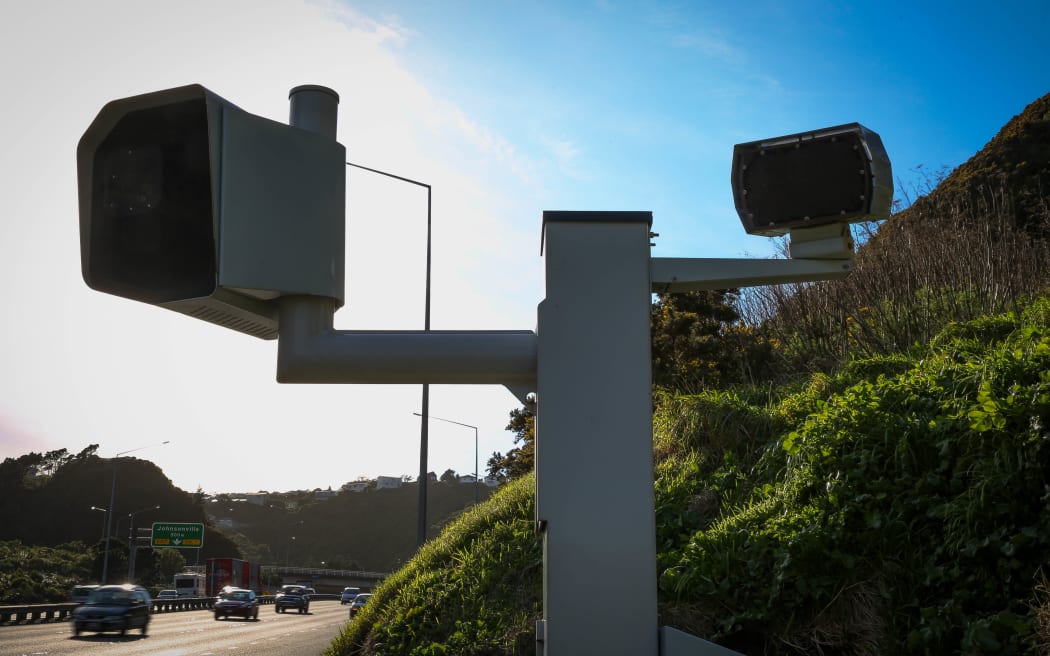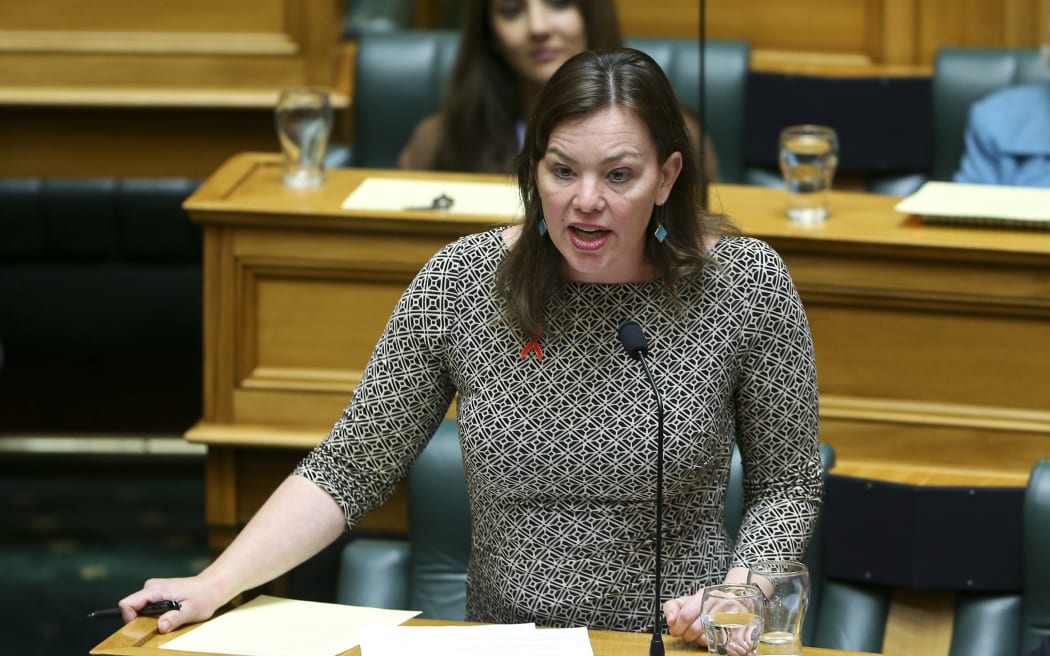
Four years after a government directive only one of 60 fixed speed camera spots has a warning sign. (File photo).
Photo: RNZ / Alexander Robertson
Only one warning sign has been installed next to speed cameras four years after a government directive was issued.
The AA criticized the lack of signs aimed at reducing speeds and tickets.
The previous government in 2019 announced a “no surprises” approach to speed cameras to warn drivers to go slowly through high-risk areas.
The signs are to say “safety camera operating” next to fixed cameras.
Four years later only one of the 60 fixed speed camera spots has a warning sign.
AA spokesperson Dylan Thomsen said that was baffling.
“We cannot explain why this has not happened – we’ve been trying to get answers to that ourselves and haven’t been able to get to the bottom of it.
“It just seems [it’s] something which hasn’t been a priority.”
Only one trial sign, which has not yet gone live, has been installed, at State Highway 1 in Kawakawa.
Thomsen said the signs had been approved and were ready to be put up and he wanted to see action from the new government.
In many developed countries, like Australia and the UK, warning signs next to speed cameras were common practice, he said.
“If we have signage at these high-risk locations, we’re giving people every chance to check their speed, make sure they are within the limit and therefore anyone within the limit has every opportunity to do the right thing.”
Signs would also cut down on the number of tickets to drivers, he said.
Analysis of the impact of a ‘reduce speed’ sign in Northland shows speeding tickets more than halved after the sign was installed in 2018 – from almost 46,917 tickets to 18,911 at the end of 2023.

Julie Anne Genter announced the policy in 2019.
Photo: Hagen Hopkins/Getty Images
Julie Anne Genter, who was associate transport minister between 2017 and 2020 and announced the policy in 2019, said the delay in signs was extremely disappointing from a safety viewpoint.
“If we roll out large numbers of safety cameras and properly signpost them, it will result in more people driving at safe and appropriate speed and that will mean fewer deaths and serious injuries.”
At the time the policy was announced, police owned and operated speed cameras.
That responsibility was supposed to be transferred to the New Zealand Transport Agency Waka Kotahi in 2019, although the agency says that still hasn’t happened.
Previous police minister Ginny Andersen said in a statement the signs were not a top priority when she was in the role compared to police recruitment, gang crime and youth crime.
Genter said the Transport Agency should have got onto the signs earlier.
“Clearly they should have done this. Last term, I had assurance from the chief executive that Road to Zero was her top priority and that she was having weekly meetings to ensure the actions from Road to Zero were being actioned.
“But clearly when it comes to safety cameras and signage, that has not happened.”
Transport Minister Simeon Brown said in a statement he expected NZTA would roll out the signs.
An NZTA spokesperson said the transfer of speed cameras from police will happen over the next couple of years, and that over that time, all fixed speed cameras will have signs installed next to them.